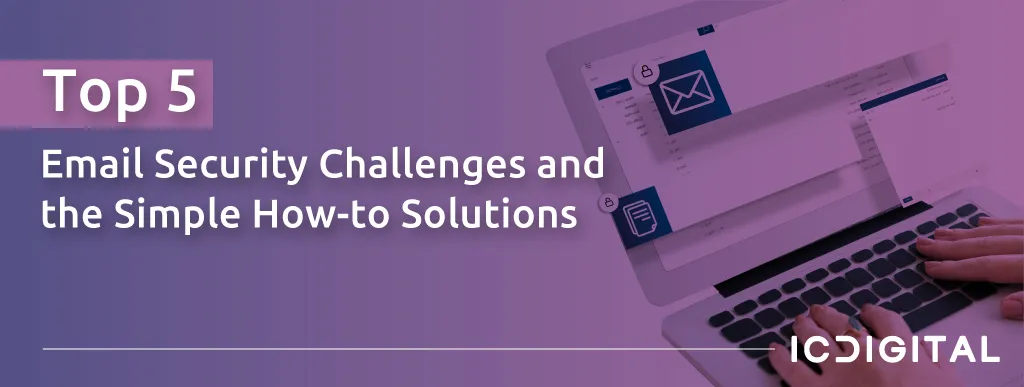
Top 5 Email Security Challenges and the Simple How-To Solutions

Fraudulent emails are one of the top challenges being faced by organisations. Every day, millions of phishing scams and fraudulent emails are sent to users worldwide. According to a recent study by an anti-spam organisation, 6.4 billion spam messages are sent to email addresses daily!
In fact, many companies don't even realise that they're at risk until after an attack has already happened.
Email security is a challenge for businesses of all sizes, but it's not always easy to know where to start.
We've put together a list of the top five email security challenges that businesses face and what best practices businesses can adopt to combat such attacks.
What is Phishing?
Phishing attacks are designed to look like they're coming from a trusted source — usually a bank or other financial institution — so recipients will click on links or open attachments that contain malware or viruses. These attachments can install keyloggers on your computer that record everything you type — including passwords — which can then be used by criminals to access your accounts and steal money from them.
What is VIP impersonation?
VIP impersonation is when a criminal poses as someone who has authority within an organisation, such as their CEO or CFO, in order to trick employees into giving out sensitive information, such as login credentials or credit card numbers. This type of attack is often carried out through phishing emails or phone calls where an attacker tries to convince someone they need
What is Ransomware?
It is a type of malicious software that installs itself on your computer and locks you out of your own data by encrypting it and then holding it for ransom. The attackers want you to pay them a fee in order to decrypt your data. Such emails often look like legitimate messages from businesses or organisations you trust. The recent Hive ransomware extorted $100M from over a thousand companies since June 2021. These attacks can cost companies millions and cause major setbacks that slow their progress.
What is Account Takeover?
Account takeover is a common problem that can happen to anyone. It happens when someone gains access to your account and starts sending emails from it without your permission. The attacker may do this in order to steal your identity, change your passwords or even make purchases using your credit card. This can be done in many ways: phishing scams, email spoofing, social engineering and more.
What is Payment Fraud?
Payment fraud occurs when a criminal uses stolen credit card information to make unauthorised purchases online or elsewhere. For example, they may buy goods or services online with stolen credit card information, or they might rent an apartment with fake IDs and rent payments made via stolen credit cards. An email attack is a type of fraud that uses email to steal information from a victim. The attacker may also attempt to trick you into sending them money or even asking for money themselves.
Here are some of the Email Security Best Practices
- Don't click on links in emails unless you are certain they are legitimate. If you're not sure, call the company or person directly by phone instead of replying directly through email. Also, if you receive an unexpected request for money or personal information via email, contact the sender directly using another communication channel (like a phone) before providing any information.
- Train your employees. Make sure they understand what phishing looks like and know how to identify malicious emails before they click on any links or attachments in an email message that appears suspicious or unusual for any reason (such as coming from an address that doesn't look like a normal company email address).
- To prevent account takeover, use two-factor authentication on every online account you have and make sure to frequently check for any suspicious activity on your accounts. If you suspect that someone has taken over your account, check all of your financial statements for any unusual activity. You can also contact the financial institution directly, which will be able to help you regain access to your account.
- You can integrate comprehensive and intelligent Email Security solutions to ensure that your email messages are kept confidential, secure and safe from cybercriminals.
Conclusion :
The number of cyber threats targeting businesses in UAE is increasing at an alarming rate. Don't focus just on your network edge, but on what's going on at the perimeter of your organisation. We must be aware that such attacks can put your company's reputation and credibility at risk and can result in significant financial losses if you're not prepared.
With Mimecast's email security solution, you can protect every user on your network with one simple platform that makes security easy for everyone—and keeps your business moving forward without interruption. It provides a secure channel for your employees to exchange email messages, attachments and other content without exposing your corporate data to hackers.
Connect with a Cyber security expert to map the threat landscape and plan a resilient strategy against unpredictable email threats.
